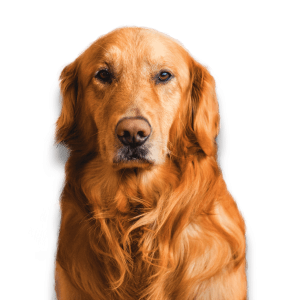
What is it?
Intervertebral disc disease (or IVDD) is one of the most common spinal issues seen in dogs. The intervertebral discs are the shock absorbers found between the bones of the spine (the vertebrae). These discs have a jelly like centre which helps to keep the movement of the spine smooth. Over time one or more of these discs can degenerate becoming calcified and hardened, losing their shock-absorbing abilities. This can lead to compression and pain in the spinal cord, particularly if the disc herniates.
What causes it?
In many cases, degeneration of the discs is thought to occur because the disc starts to lose the ability to ‘hold water’. This leads to it becoming calcified and harder than it should be. This is more common in chondrodystrophic breeds (which have abnormally short and curved limbs).
However, there are three categories of disc disease:
Hansen type I disc disease
This is most common in small breed dogs aged 2 years or older. It is a sudden onset event where the inner contents of the inside of the disc have herniated due to their loss of flexibility (like a jam that has crystallised and gone firm, being squeezed out of a doughnut). Normal movements, like twisting cause this herniation with the contents of the disc being squeezed upwards towards the spinal cord. This causes compression of the nerves which can lead to pain all the way through to paralysis, depending on the severity, and often requires emergency surgery.
Hansen type II disc disease
This type of disc disease is more similar to human disc disease and can be seen in non-chondrodystrophic dogs. It can be seen in any breed but is most common in medium-large breeds that are over 5 years of age. Instead of the contents of the disc bursting out, the outer portion of the spinal disc bulges. Occasionally tearing of the disc occurs which can then press on the spinal cord, along with any associated bleeding. Symptoms are similar to Hansen type I disc disease, though they can either develop suddenly or more slowly over a period of time.
Hansen type III disc disease
In this type of disc disease, a healthy disc suddenly tears causing the normal inside material to explode outwards. This is usually caused by a sudden event like heavy exercise or trauma. Many animals can recover from this with pain relief and rehabilitation.
What breeds are at risk?
Certain dog breeds are more at risk than others due to them being chondrodystrophic (having dwarfism in the genes). They typically have disproportionately short and curved limbs, compared to their long spines. This includes the following -
- Dachshunds
- Bassett hounds
- Shih Tzus
- Beagles
- French bulldogs
- Pekingnese
- Cocker spaniels
What are the clinical signs or symptoms?
The following symptoms are commonly seen in dogs with IVDD –
- Pain in their back and/or neck
- Weakness in all 4 legs or just the back legs (depending on the location of the disc disease)
- Paralysis
- Incontinence
- Trembling
- Panting
- Difficulty moving and an abnormal posture
How is it diagnosed?
Your vet will start by examining your dog. They will be checking your pet’s heart rate and temperature but will also specifically be looking for any signs of lameness or weakness. They will feel your dog’s back and neck to look for any signs of pain, as well as checking their reflexes to see if there are any delays.
If your vet has concerns about your dog, then they may recommend some further tests. While your vet can run some things in-house, like blood samples and x-rays, most will recommend referring your pet for advanced diagnostic imaging. MRI and CT scans are the most useful tools to diagnose this condition, which are large expensive pieces of machinery that most first opinion vets don’t have access to. So, your vet will usually refer you to a larger, more specialist hospital for further work-up.
How can it be treated or managed?
Mild cases of the condition may be treated conservatively with pain relief and strict cage rest which may be required for 2-4 weeks. However, if your dog is more severely affected, with loss of mobility and toileting issues, then surgery is advisable. Again, this type of procedure is more specialised than most first opinion GP vets can provide and would be carried out at the referral centre. This type of emergency surgery is performed to stop total paralysis from occurring.
Physiotherapy and rehabilitation may also be needed for a period after treatment, to strengthen the muscles again, so they will take time to recover.
If your dog is already at the stage where they have lost all sensation (including the ability to feel pain) and symptoms have been allowed to go untreated for more than a day or two, then the prognosis is considered poor. Sadly, euthanasia may be the kindest option for these patients, especially if financial constraints are influencing treatment options.
Can it be prevented?
Sadly, the condition cannot be entirely prevented. We can encourage breeders to perform healthier breeding of animals in the first place by not mating dogs with such extreme characteristics. Owners should also be looking to purchase puppies for health and function rather than buying them because of their looks, which may mean looking at alternative breeds.
There are some steps you can take to look after your pet’s back if he is a breed that might be prone to IVDD. Discouraging jumping up on furniture or to greet people, ensure they are kept at an appropriate body weight and use a well-fitting harness rather than a collar (to reduce strain on the neck).
It is also worth bearing in mind that if your dog has successful spinal surgery on one area of their back, there are no guarantees that discs elsewhere won’t cause your pet issues later down the line. So some dogs can have a recurrence of the condition.